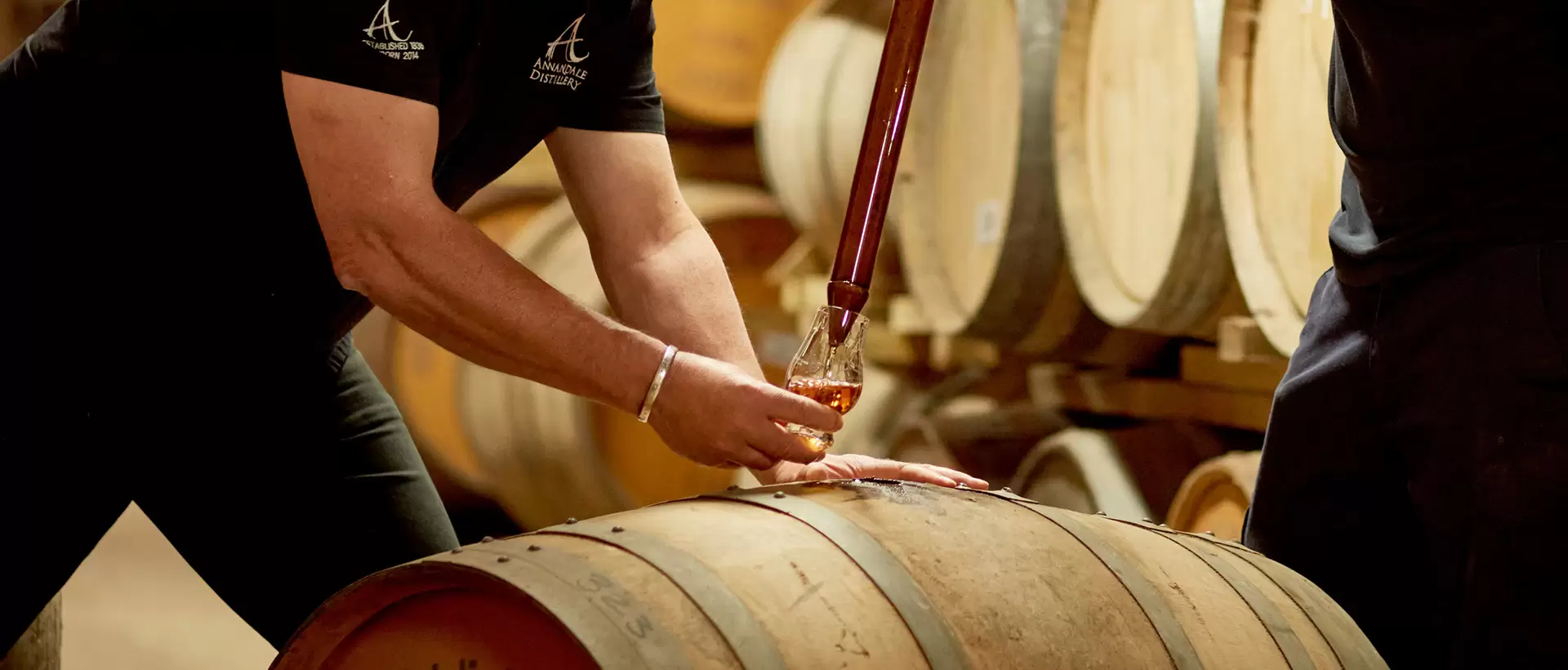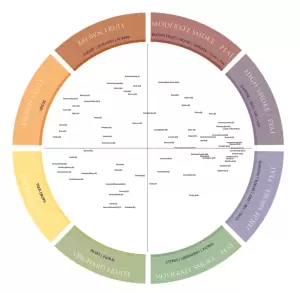With over 100 Single Malt Scotch whisky distilleries (in 2007) producing multiple expressions (e.g. age, cask type/finish, etc.), there are literally thousands of Single Malts for consumers to choose from. Although the sensory universe of Single Malts was inevitably going to be very crowded, was there any ‘white space’ (i.e. gaps in the sensory universe) where we could credibly insert Annandale’s peated and unpeated expressions?
To explore this, we used a form of sensory profiling known as descriptive sensory analysis. This work was undertaken by a panel of 12 highly trained, professional sensory assessors working for our sister company, MMR Research Worldwide (www.mmr-research.com) in Reading, UK. MMR’s professional sensory assessors routinely work across a wide range of food, beverage, personal care and even homecare products, so they’re vastly experienced in deconstructing holistic sensory perceptions into their constituent sensory characteristics, describing these sensory characteristics very precisely and then quantifying the magnitude of each sensory characteristic in each product.
We selected approximately 60 Single Malts for sensory profiling. These were mainly standard distillery expressions such as Aberlour 10, Ardbeg 10, Bowmore 12, etc., etc., chosen using David Wishart’s excellent book ‘Whisky Classified – Choosing Single Malts by Flavour’ to guide our initial selection. It was important that we should sample the sensory universe as thoroughly as possible whilst restricting the number of whiskies to a sensible, practical maximum. (Sensory profiling is very time consuming and expensive but extremely effective.)
A statistical procedure known as Analysis of Variance identified which sensory characteristics were most effective in discriminating amongst the whiskies. Thereafter, Principal Component Analysis was used to create a 2-dimensional map of the sensory universe of our Single Malt Scotch whiskies.
The horizontal axis of the sensory map differentiates the whiskies by degree of peaty character, with the most extreme, peaty whiskies positioned towards the right of the map (e.g. Laphroaig 10, Ardbeg 10 and Kilchoman) and the least peaty whiskies towards the left (e.g. Glenlivet 10 and Glefiddich 12). The vertical axis is defined by the heavily sherry-matured malts towards the top (most especially Macallan Sherry Wood and Aberlour A’bunadh) which are characterised by brown fruit and molasses/dark sweet attributes (fruity/dark) with the non-sherry matured malts such as Cardhu 12, Longrow 10, and Glenkinchie 12 (i.e. those matured primarily in ex-bourbon casks) situated at the opposite extremity. These are characterised by sensory characteristics such as pear drops, orchard fruits and citrus. These lighter fruity/estery characteristics are the antithesis of the fruity/dark notes associated with sherry maturation.
Kilchoman and Ardbeg 10 standard expressions are located towards the bottom right hand corner of the sensory map because they combine heavy peating with fruity/estery characteristics. Lagavulin 16 and Bowmore 12 are also heavily peated but fruity/dark rather than fruity/estery, which locates them towards the top right of the sensory map.
Glenmorangie 10, located towards the bottom left of the sensory map, is fruity/estery in character with a strong hint of vanilla (probably deriving from the once-used bourbon casks in which it was matured). Aberlour A’bunadh and Balvenie Doublewood 12 are both located towards the top left of the map because a significant proportion of the whisky used to create these Single Malts will have been matured in sherry butts or other sherry-conditioned casks.
Much more detail could be extracted from this sensory map but suffice to say that there’s a large area of ‘white space’ towards the bottom right hand side of the map (i.e. to the left of Ardbeg 10, Kilchoman and Caol Ila 12). Realising this pleased us enormously because it created the possibility of developing a peated expression of Annandale that would be less heavily peated than Ardbeg 10 and Kilchoman, combined with distinctly sweet and fruity/estery notes. With this established, it was reasoned that Annandale’s unpeated expression should be located in an area of white space towards the bottom left corner of the map, beyond Longrow 10, Cardhu 12 and Glenmorangie 10. In doing this, it was hoped that we could create a unique fruity/estery, sweet, vanilla sensory complex that would define ‘Annandale’ and make it somewhat unique, whilst giving the peated and unpeated expressions a common sensory component. Positioning Annandale’s two standard expressions thus would, we hoped, satisfy all four of the development criteria mentioned previously.
By ‘reverse engineering’ the mathematics used to create the sensory map, it was possible for us to create ‘theoretical’ sensory profiles for our peated and unpeated expressions of Annandale. These data rich sensory profiles became the benchmarks against which everything that followed, in terms of plant design, production specifications and even our branding and packaging, would subsequently be developed.
Now we needed to find a genius who could design a plant and a process that would deliver whiskies with the target sensory profiles. Fortunately, we knew Dr Jim Swan!







